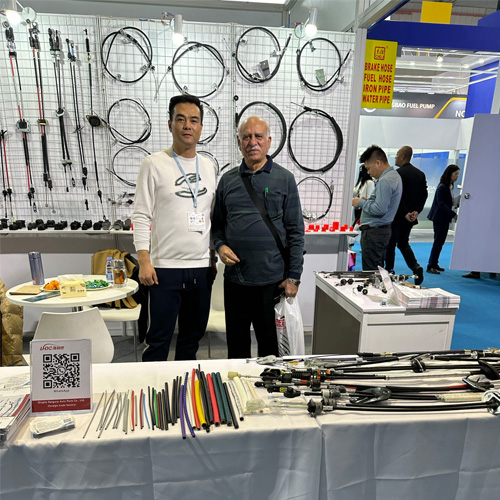trailer handbrake cable
Understanding Trailer Handbrake Cables Importance, Maintenance, and Replacement
When it comes to towing trailers, safety is paramount. One crucial component that often gets overlooked is the trailer handbrake cable. This vital part of the braking system ensures that trailers remain stable when parked and provides an additional layer of safety while on the move. Understanding what trailer handbrake cables are, their importance, maintenance considerations, and replacement can significantly enhance towing safety and efficiency.
What is a Trailer Handbrake Cable?
A trailer handbrake cable, often referred to as a parking brake cable, connects the handbrake lever (or pedal) in the towing vehicle or trailer to the braking system of the trailer. When the handbrake is engaged, the cable pulls on the brake mechanism, securing the trailer in place and preventing it from rolling away. This feature is especially critical on inclined surfaces or when the trailer is loaded.
Importance of Handbrake Cables
The importance of handbrake cables cannot be overstated
. A properly functioning handbrake cable1. Prevents Accidental Rollaways When a trailer is parked, a malfunctioning handbrake can lead to dangerous rollaways, creating significant safety hazards for other road users and property. 2. Aids in Maneuvering During loading and unloading, a handbrake ensures the trailer remains stationary, allowing for safer handling of goods. 3. Enhances Overall Trailer Stability With a reliable handbrake system, the risk of accidents caused by trailer sway or drift is considerably reduced during stops.
Maintenance Tips for Handbrake Cables
trailer handbrake cable

Proper maintenance of the trailer handbrake cable is essential for ensuring its effectiveness and longevity. Here are some vital maintenance tips
1. Regular Inspection Periodically examine the cable for signs of wear and tear, such as fraying, rust, or kinks. Look specifically around the connection points as these areas often wear out first. 2. Lubrication Keeping the cable well-lubricated can prevent friction and corrosion. Use a suitable lubricant to maintain smooth cabling operation. 3. Check the Mechanism Functionality is crucial. Test the handbrake regularly to ensure it engages and disengages smoothly. If it feels stiff or doesn’t hold the trailer, it’s time for further assessment. 4. Cleanliness Keeping the cable and its surrounding areas clean can prevent dirt and grime build-up, which could impede the cable's function.
Replacement of Handbrake Cables
If routine inspections reveal significant wear or damage, it may be necessary to replace the handbrake cable. Here’s how to do it effectively
1. Choose the Right Cable Ensure you purchase a handbrake cable that matches your trailer's specifications. Review the manufacturer’s recommendations or consult a professional. 2. Follow Installation Guidelines Carefully follow installation instructions either from the manufacturer or professional advice. Proper measurement and tensioning are critical for the cable's functionality. 3. Test the New Cable Once installed, test the braking system extensively to ensure reliability and safety. Each component should engage and release appropriately.
Conclusion
In summary, the trailer handbrake cable is a small but critical component that plays a substantial role in towing safety. By understanding its importance, regularly maintaining it, and knowing how to replace it when necessary, trailer owners can ensure a safer towing experience. Regular attention to this component can prevent accidents and prolong the life of the trailer, making it an essential aspect of responsible trailer management.
-
Workings of Clutch Pipe and Hose SystemsNewsJun.04,2025
-
The Inner Workings of Hand Brake Cable SystemsNewsJun.04,2025
-
The Secrets of Throttle and Accelerator CablesNewsJun.04,2025
-
The Hidden Lifeline of Your Transmission Gear Shift CablesNewsJun.04,2025
-
Demystifying Gear Cables and Shift LinkagesNewsJun.04,2025
-
Decoding Clutch Line Systems A Comprehensive GuideNewsJun.04,2025
